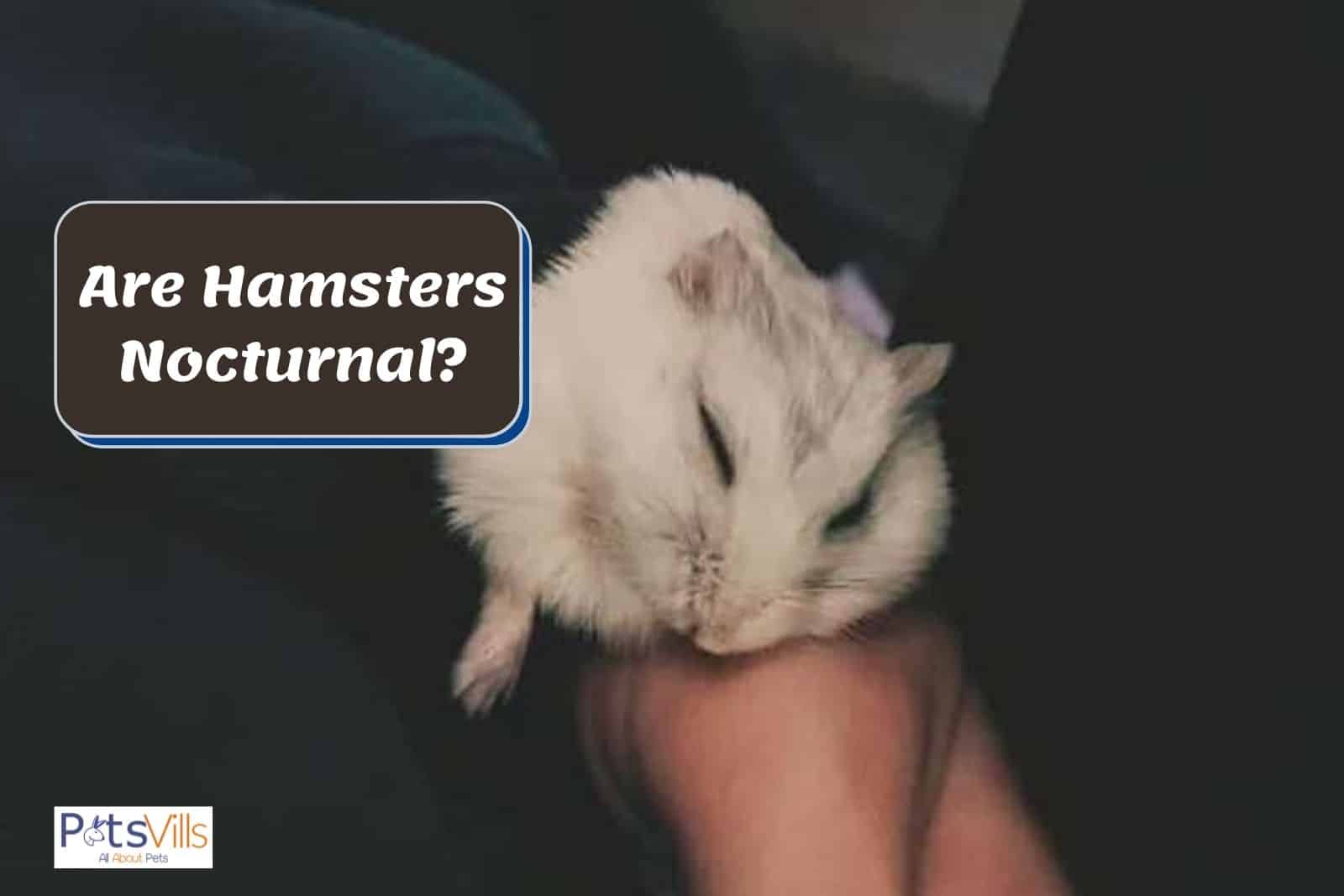Are Hamsters nocturnal?
If you’re planning to keep your pet hammy in your bedroom, this is definitely something you want to know!
Read on to learn all about this adorable rodent’s sleep schedule!
Get Your Own Hamster Owner’s Handbook!
Table of Contents
Are Hamsters Nocturnal? Hamsters Sleeping Schedule
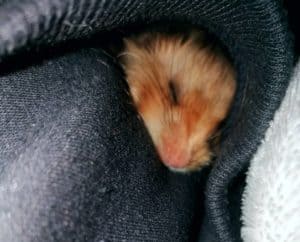
Although many believe hamsters belong to the nocturnal category, that isn’t actually true.
While they may not be nocturnal, they aren’t diurnal either. Interestingly, hamsters are midway between the two called crepuscular.
This means that they’re most active during dawn and dusk (or “twilight” times). [1]
Hamsters are categorized this way due to their activity schedule and unique sleeping habits.
Ever noticed how hamsters aren’t exactly the most active creatures during the daytime? At some point, you may have wondered if they only wake up at night.
That is, however, a trait of nocturnal animals, and as we’ve established, that doesn’t really fit hamsters. Let’s discuss crepuscular animals in a bit more detail, and I bet you’ll see that it perfectly fits your furry friend!
What is Crepuscular?
The word ‘crepuscular’ comes from the Latin word ‘crepusculum’ which literally means twilight. It is used for those kinds of animals that are active during twilight hours [2].
This means that these animals are most energetic during dawn and dusk. They need faint sunlight to wake up and be active in the wild.
The crepuscular nature of hamsters could be due to their vulnerability in the wild. Being easy to hunt, they’re a common target of predators.
That is why they are programmed to avoid being active when their predators are at large [3].
Another reason for being active during twilight hours may be the extremes of temperatures at midday or night time.
To avoid the hot sun during the day or harsh cold at night, these animals may prefer dawn and dusk for activity.
Other examples of crepuscular animals include bats, housecats, rabbits, guinea pigs, chinchillas, squirrels, skunks, possums, and rats.
Check: Cute Hamster Names
The Differences Between Nocturnal, Crepuscular, and Diurnal
The terms crepuscular, nocturnal, and diurnal are all classifications of animals according to their sleep schedule. Here’s a breakdown of each of these terms to help you understand them better:
Nocturnal:
Do hamsters see better in the dark? Actually these are creatures of the night. You won’t find them out and about enjoying the sun.
They prefer to stay in their burrows or whatever habitats they have during the day. When night comes, the real activity begins.
Interestingly, nature has granted these creatures with specialized senses to live out the night.
They have advanced eyesight that helps them see in the dark. Their senses of hearing and smell are also highly developed. All this helps them in steering clear of predators.
They are also able to avoid the heat of the day.
Some examples of common nocturnal animals are hedgehogs, foxes, aardvarks, owls, and bats.
Crepuscular:
As previously discussed, crepuscular animals are mainly active during twilight hours.
This is the time when the atmosphere is illuminated but the sun isn’t directly visible. Unlike nocturnal animals, crepuscular animals need dim light instead of pitch darkness.
Hamsters belong to this kind.
In nature, crepuscular animals have prey that is active during these lowlight hours. This may be one reason why they prefer this time to stay up.
Another reason is to avoid daytime and nighttime predators. Crepuscular animals manage to avoid extremes temperatures too while having some degree of illumination.
There are subtypes of crepuscular animals as well. Matutinal animals are those crepuscular that stay active during the dawn.
They wake up before diurnals to forage the best hunt.
Vespertine animals are active during the evening hours of dusk. A part of their waking time may overlap with some nocturnals [4].
Check: Do Hamsters Have Eyelids?
Diurnal:
These animals are active during the day and sleep at night. When patterns of activity occur about 24 hours apart, they are called circadian rhythms [5].
Unlike nocturnal animals, the eyes of diurnal animals contain numerous cone cells.
This results in good daylight vision in contrast with nocturnal animals. Nocturnals are often unable to see colors and are better suited for nighttime vision.
READ MORE: Do Hamsters Attract Mice?
Take a look at this quick video:
Check out the things that hamsters hate in this video!
How Long Do Hamsters Sleep For & Why is My Hamster Always Sleeping?
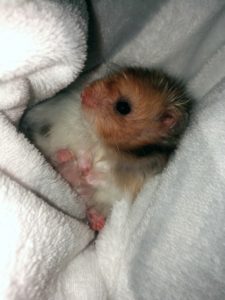 The exact sleeping hours per day may vary from hamster to hamster.
The exact sleeping hours per day may vary from hamster to hamster.
It depends on whether they are living with a mate, in which case fellow hamsters often keep their sleep times in sync. It also depends on how old they are.
On average, a hamster may sleep six to eight hours during the day. In order to know your hamster’s usual sleep cycle, you need to observe it.
If at some point it is sleeping unusually long day and night, you should get it checked by a vet.
Check out this video to learn more about hamster sleep habits:
Where Do Hamsters Like to Sleep?
Just like us humans, hamsters also need peace and quiet to sleep.
Instead of completely isolating your hamster, you may place its cage somewhere it can have some human exposure.
A few people passing by throughout the day would be ideal. This will help your hamster get used to being near humans. Just take care to avoid noisy or crowded areas.
The next step is some cozy bedding. Hamsters like making their bedding themselves.
Just give your hamster a shredded towel and some fresh hay, and watch it get to work.
Wood shavings made from safe hardwoods like aspen are another option. One problem with wood shavings is they’re not absorbent, so you might need to clean the bathroom residues daily.
Wood and paper pellets are other good, absorbent alternatives.
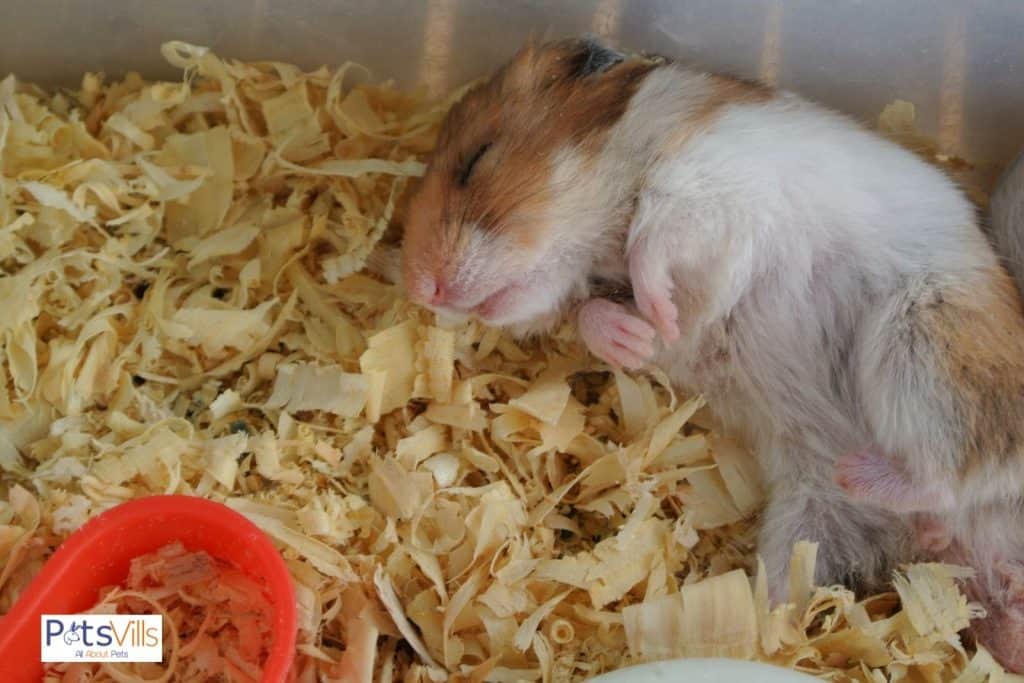
Avoid providing fluffy bedding. This could cause your hamster to choke upon nibbling the fluff.
For wood shavings, avoid cedar and pine since they are harmful. Avoid synthetic materials like polyester and cotton since they can cause serious digestive issues.
Go for materials made or reconstructed cellulose or natural plant fibers.
As for cleaning your hamster’s bedding, never replace it with an entirely new bed.
Hamsters like the scent they leave in their bedding, so it is not recommended to get rid of it at once.
Just clean out any wet spots and replace them with some new material. Remove any droppings while ensuring the scent of the bedding stays in place.
READ MORE: Do Hamsters Like Light or Dark?
Why Do Hamsters Sleep During the Day?
Hamsters are crepuscular. They are naturally programmed to be active during low-light hours. They are not lovers of sunny days or active nights.
This is why you can find them fast asleep during daylight hours. Some say this nature is their way of avoiding daytime predators in the wild.
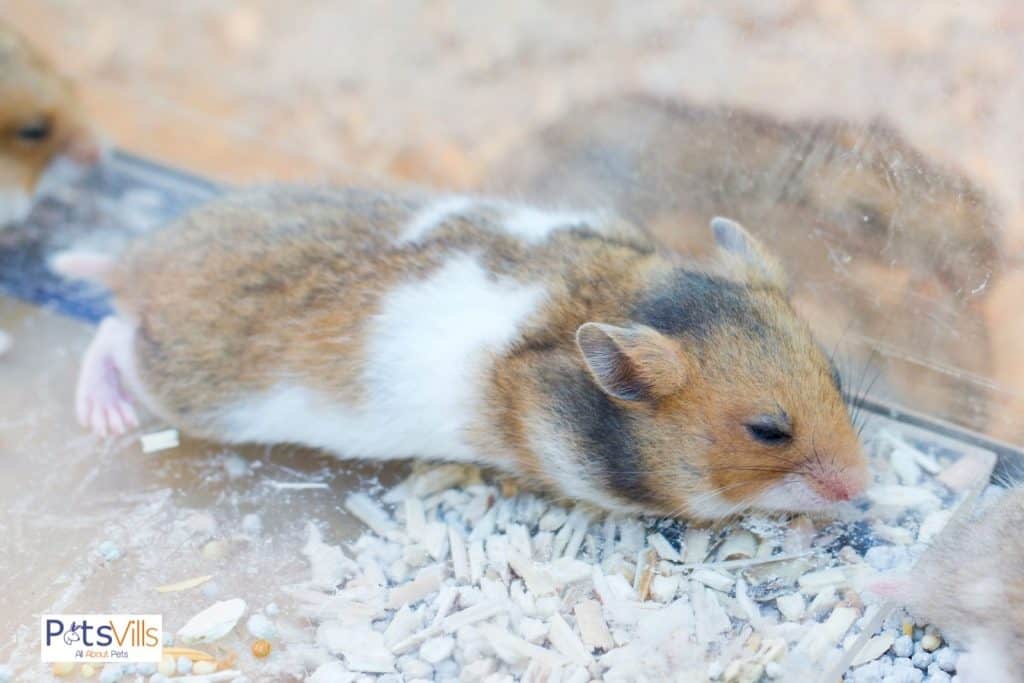
In hot areas, they may also lay low to avoid direct sunlight and temperature extremes.
READ MORE: All About Hamster Sounds
Can You Change Your Hamster’s Sleeping Schedule?
Since hamsters are mainly active at dawn and dusk, it can be a nuisance for those hamster owners who don’t stay up late.
They may not be finding enough time to play with their pet. However, your hamster’s activity hours can be manipulated to a certain extent.
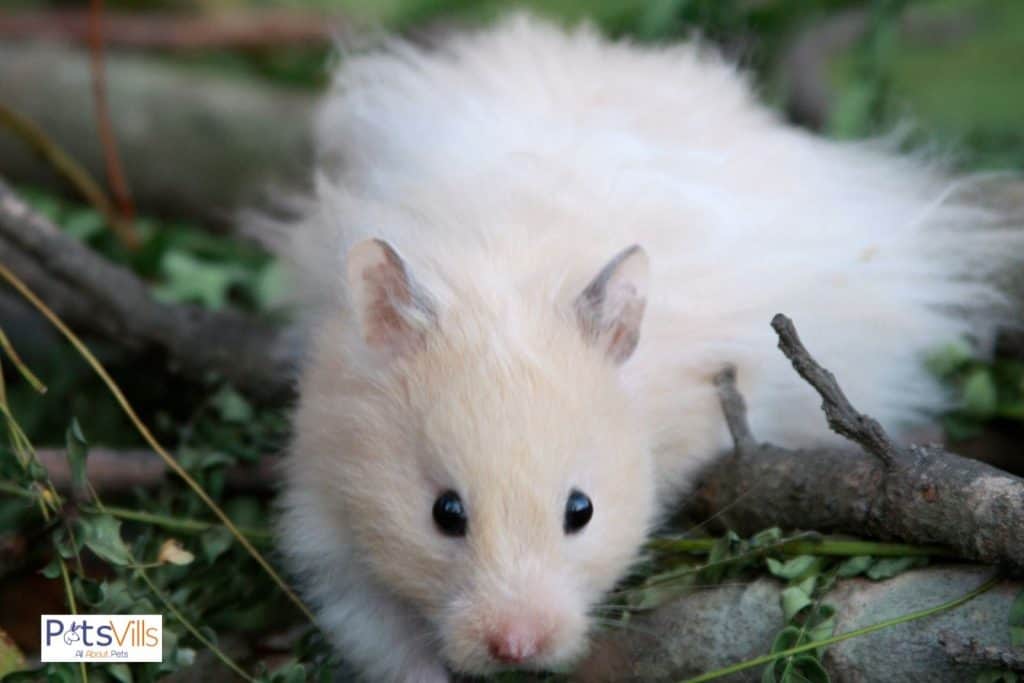
While changing your hamster’s sleep schedule is possible, extreme changes should be avoided. The reason they give for recommending against it is that diurnal behavior goes against their nature.
Health Problems
Conditioning a hamster to stay up during the day may lead to long-term stress.
Can cause health problems for the little animal. They may develop biting problems, weight loss, or other health issues.
In some cases, long-term lack of sleep may even reduce the lifespan of your hamster.
You need to take care that it makes up for the sleep it loses otherwise, let the creature stick to its regular schedule.
It is possible to change your hamster’s sleep schedule by a few hours. What you’ll need is just the right kind of light and your hamster’s favorite food.
You need to offer these to your hamster at the same time daily. This time can be set by you according to when you want it to wake up.
Start By Waking Your Hamster Up Gently
You can do this in many ways. Talk softly to it, sing or hum a little tune. Offer a piece of carrot or broccoli by placing it close so that the smell may awaken it.
Dim the lights in the room to imitate the soft glow of twilight hours.
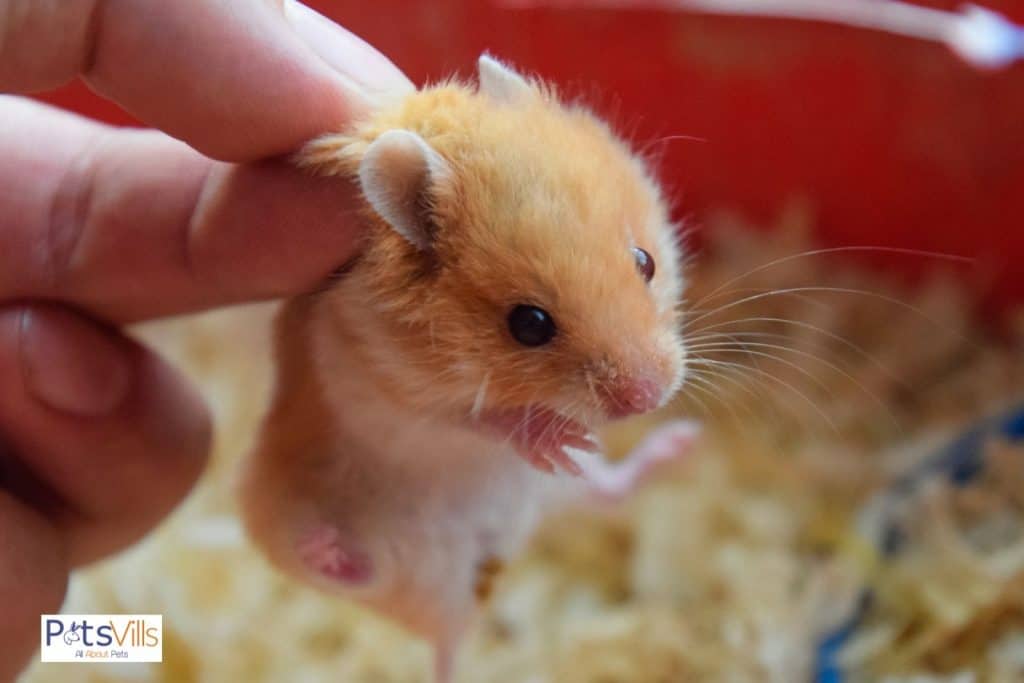
In its waking hours, in addition to offering food, increase your hamster’s social time as well.
Play with it every day, slowly increasing the time you handle it. Get to know your pet, and let it know you as well.
It will soon start enjoying your company and may even stay up for you during the day.
However, hamsters need alone time too, so don’t go too far with the handling all of a sudden.
While handling, you can pet your hamster gently, talk to it, and let it run free for a while.
This is a good way to use up your hamster’s energy so that it will be sleepy by nighttime. As it is, hamsters might take time getting used to the human touch, especially those that haven’t been pets before.
A wise way to change your hamster’s sleep cycle is to do it gradually. It may take a couple of weeks before your hamster adjusts its sleep timings to suit you.
Every day, you can increase your hamster’s waking time by 15 minutes. Soon you’ll notice your pet catching up on this lost sleep at night.
A fair warning – don’t just wake a sleepy hamster at odd hours all of a sudden!
That will just make you end up with a grumpy rodent at your hands. You should also avoid directly picking up a sleeping hamster.
That will just startle it, and might even cause it to bite you. A good idea is to tap their cage or habitat lightly.
When Do Hamsters Hibernate?
Do hamsters hibernate? Hamsters may go into temporary hibernation (torpor) that lasts a few days, or full hibernation in colder climates. It’s a seemingly death-like mode of sleeping, and waking up the creatures can be tricky.
Temperatures below 15 degrees Celsius can cause a hamster to go into torpor. Typically in the wild, hamsters may go into hibernation that lasts longer when the temperature drops below 4.5 degrees Celsius.
Keeping your hamster’s environment warmer than 15 degrees Celsius helps avoid hibernation.
Watch this video for additional information:
How Long Do Hamsters Hibernate For?
Hibernation is basically a response to cold weather that helps hamsters survive in the wild.
Until temperatures aren’t favorable, you can expect a long hibernation period.
After about a week’s sleep, it wakes up, munches on some food, cleans a bit, and goes back to hibernating.
Torpor, on the other hand, can last for a few hours or go on for a few days until the environment warms up a bit.
Hamster Requirements to Make Sure They Get Good Quality Sleep
There are a few things to keep in check if you want your hamster to sleep well.
Bedding that is cleaned at least weekly is essential for hygiene maintenance. Avoid keeping your hamster in very loud or noisy areas.
Also avoid disturbing it while it sleeps, and never startle it into waking up.
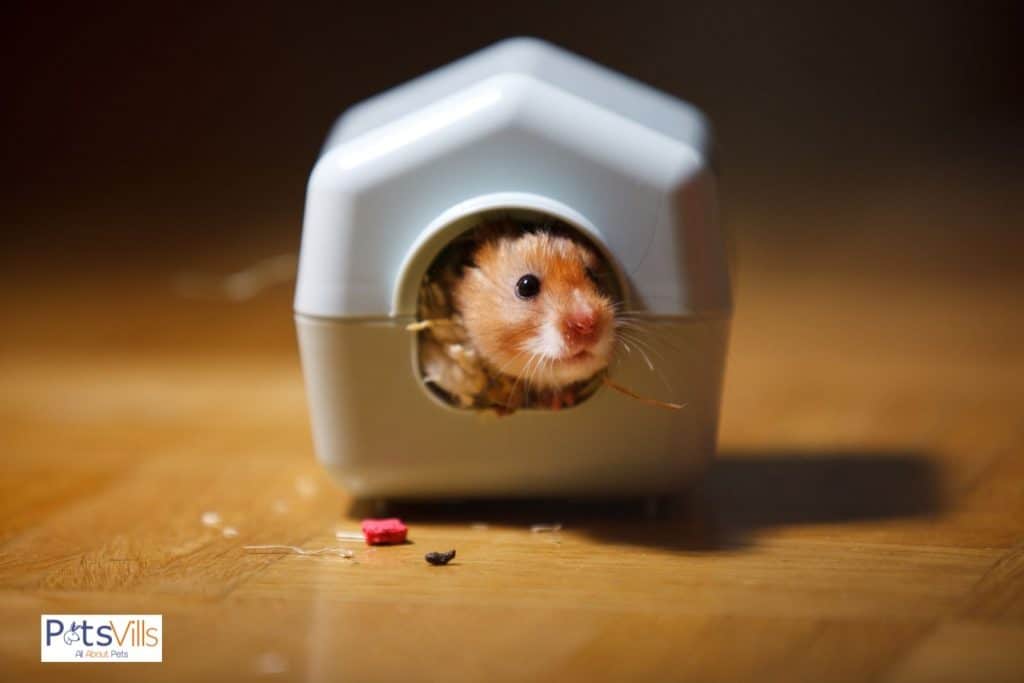
Sometimes, hamsters may take a break from sleeping for a quick bite or two.
Keeping their habitat stocked with some treats at all times is ideal. Feed your hamster well to ensure good-quality sleep.
In order for your hamster to sleep well, it is necessary that it gets some exercise during its waking hours. Leave it free for a while, and install a hamster wheel if you don’t already have one.
It is also a good idea to take away your hamster’s toys when it’s bedtime. This will help avoid distractions and your hamster will go to bed on time.
Coming back to the lighting, it is better to have your hamster in some dark environment at night, and low-lit places in the daytime. Let your animal follow its natural sleep schedule if possible.
Lastly, once your furry friend hits the hay, appreciate its cuteness from a distance. Let it rest alone for a few hours.
FAQs
Where do hamsters come from?
Hamsters are thought to be first discovered in Syria but they also lived in Greece, Romania, Belgium, and northern China.
What habitat do wild hamsters live in?

In the wild hamsters like dry warm locations such as sand dunes.
When were hamsters domesticated?
Hamsters were first successfully domesticated and bred in 1939.


Resources
- 1. Crepuscular animals [Internet]. Animalia.bio. 2021 [cited 2021 Dec 7]. Available from: https://animalia.bio/crepuscular?page=1
- 2. Merriam-Webster Dictionary [Internet]. Merriam-webster.com. 2021 [cited 2021 Dec 7]. Available from: https://www.merriam-webster.com/dictionary/crepuscular
- 3. Randler C, Kalb J. Predator avoidance behavior of nocturnal and diurnal rodents. Behavioural Processes [Internet]. 2020 [cited 2021 Dec 7];179:104214. Available from: https://www.sciencedirect.com/science/article/abs/pii/S0376635720302126
- 4. rangerplanet.com. When Animals Are Active: Diurnal, Nocturnal, and Crepuscular [Internet]. rangerplanet.com | Just Love Nature. 2021 [cited 2021 Dec 7]. Available from: https://rangerplanet.com/when-animals-are-active-diurnal-nocturnal-crepuscular/
- 5. Circadian Rhythms [Internet]. Nih.gov. 2019 [cited 2021 Dec 7]. Available from: https://nigms.nih.gov/education/fact-sheets/Pages/Circadian-Rhythms.aspx
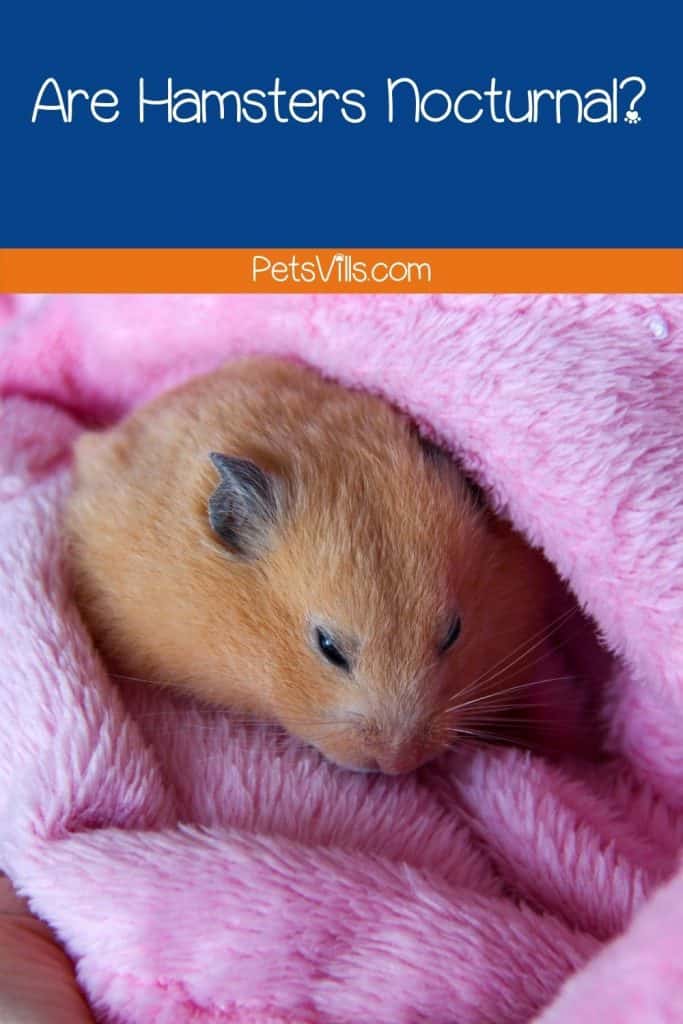
How long do your hamsters sleep? Please let us know in the comment section below!

Andreea is a very passionate content creator and her purpose is to provide you with the most interesting articles, while constantly discovering new facts. She’s been freelance writing for the past five years and has created numerous articles and educational materials while managing her own mom blog.
Read her Latest Articles
Find her on
FACEBOOK AND Instagram

